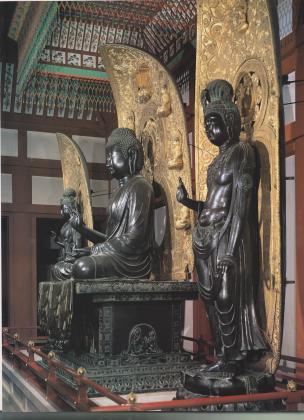
Main Hall altar from the east; Yakushiji, Nara.
807 Schermerhorn Hall
RSVP: mo2486@columbia.edu
Although Japanese religious culture during the long 8 th century is well represented by rich
documentation and an extraordinary number of surviving Buddhist artifacts and temples, the era’s
beliefs and ideologies deserve further excavation. This talk offers a close analysis of an understudied
artistic genre that can be said to be “hiding in plain sight”—the pedestals positioned beneath statues of
the Buddha. Central to the discussion are possible meanings for the unprecedented and masterful array
of figures and motifs on the bronze pedestal of the central Buddha at Yakushiji (temple). Such
parasculptural elements as pedestals made before and after Yakushiji’s central Buddha have not been
overlooked so much as jettisoned to support narratives about “state Buddhism” and cosmopolitanism. I
argue that the pedestals are agents of ideation and valuable artistic proofs: unedited windows to pre-
and para-Buddhist cosmologies and their cultural integration during an era shaped by ideals of Sinitic
imperial rule.
